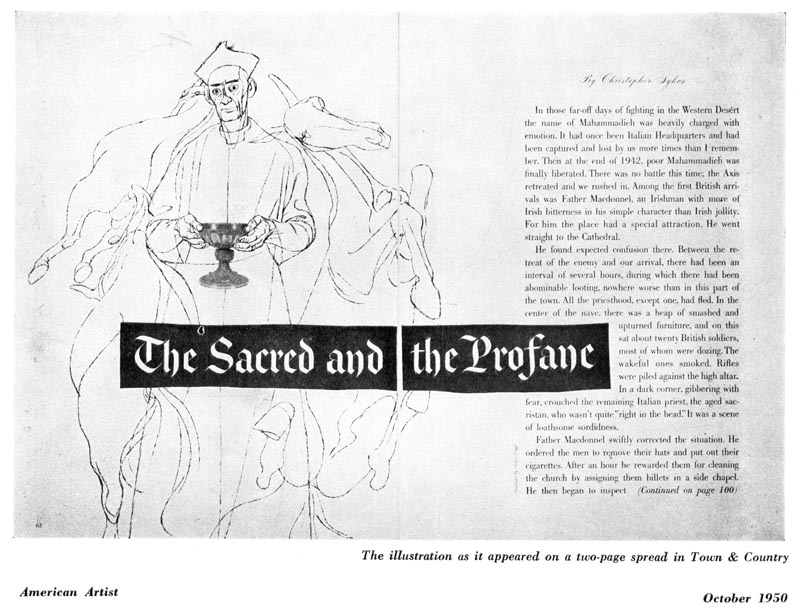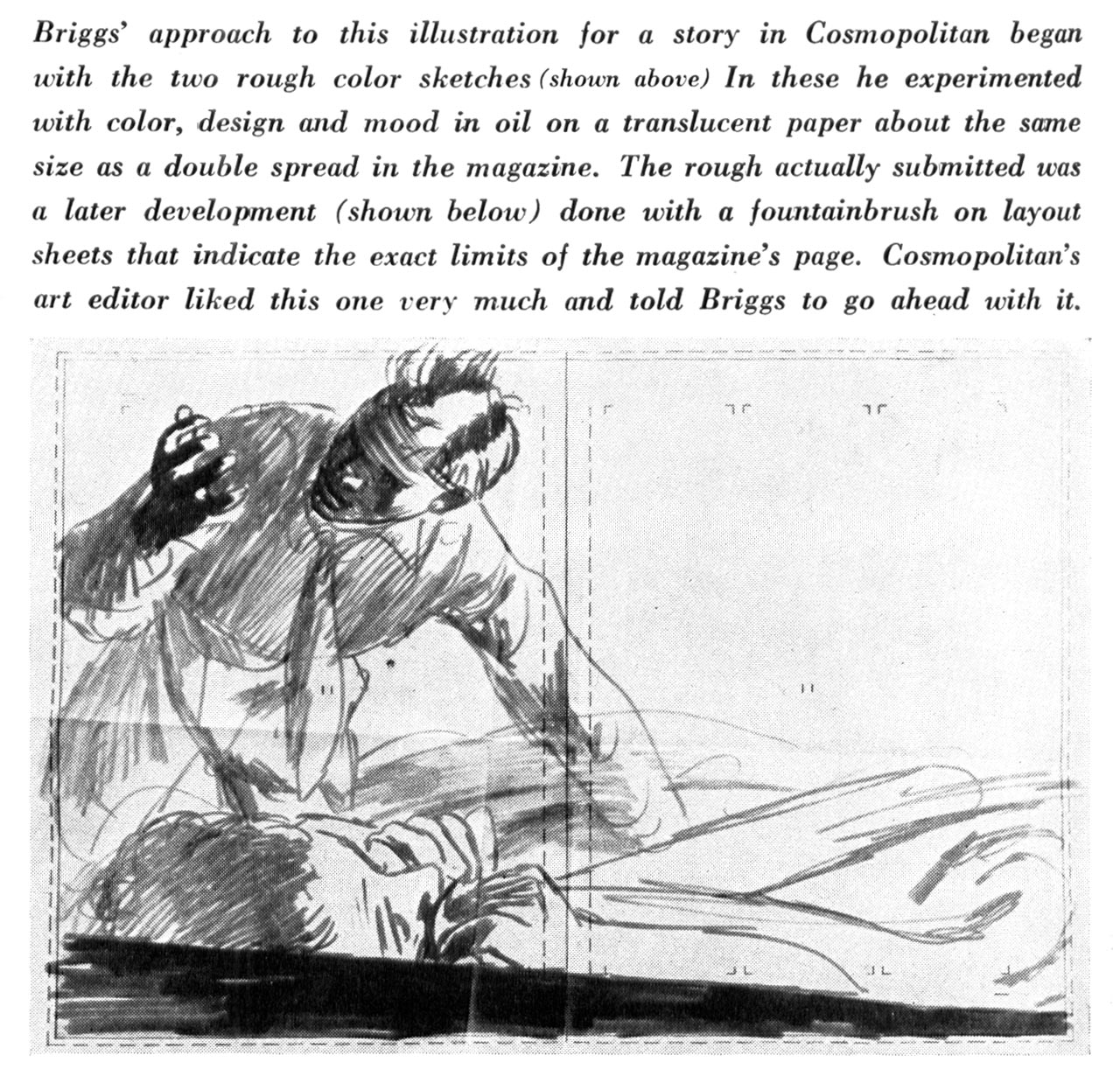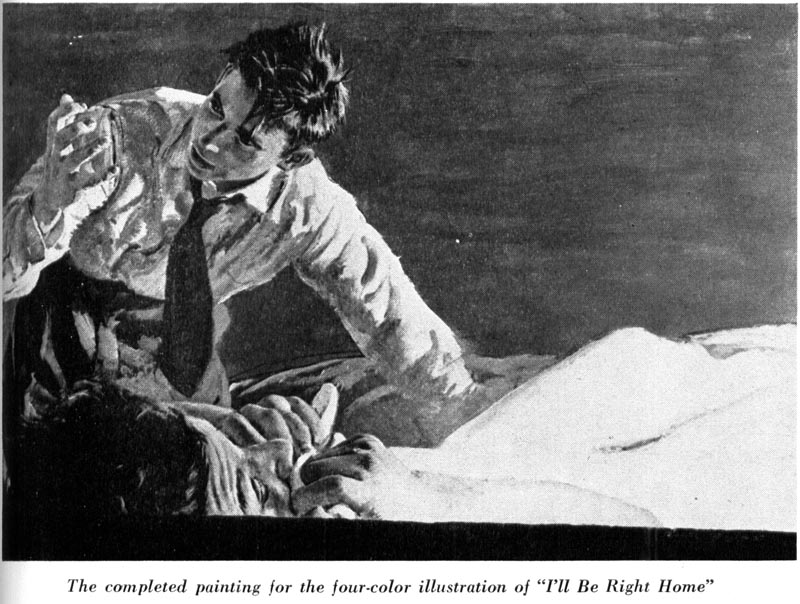
Briggs introduced one innovation during this period; he began making drawings for line reproduction on white window-shade cloth. The pleasantly irregular texture gives pencil or crayon a much more characterful line or tone than the customary Rossboard patterns. It was during this period that he began using models to give added authenticity to his pictures.

But work and experimentation are not the only methods for furthering the search for self: Briggs felt the necessity for escape and meditation. For six months he turned his back upon his drawing board. He went to the Gaspe Peninsula and in that rugged but partly tamed country he painted and thought. Removed from the frantic New York scene, relieved from art directors' pressures, he was able to see things in perspective. He came back realizing that an illustrator not only has to master his craft but has to live, to pile up experiences and become aware of the infinite aspects of our world. He came back prepared to document his pictures, to treat each one as a personal experience, to solve each problem in his own way.

Gradually the new outlook won him a following. He began working for Redbook, then Cosmopolitan. In 1944, the Saturday Evening Post editors, who had been watching his work, asked him to illustrate for them, and his work has been appearing in their pages ever since.

As might be expected of an artist of Briggs' zeal for improvement and powers of self-criticism, his pictures develop through struggle. Each picture is a battleground. He usually tries many quick composition sketches, discarding liberally. He has a fertile compositional sense, which sometimes leaves him torn between three or four attractive alternatives. But when he finally makes his decision, he begins taking photographs. He prefers to take his own and to use non-professional models, usually friends, neighbors and the townsfolk of Westport. He takes many photographs and makes drawings from the most promising. During this period several sessions of photography are likely to alternate with sessions of drawing. The pictorial idea gets hammered out blow by blow.

Briggs does not use the camera as a substitute for drawing. "The greatest convenience in using a camera," he says, "is that you can experiment with thirty or fifty poses in half an hour, whereas it would take five or six days to draw that many. The only trouble is that if you can't draw in the first place, it is more difficult to draw from photographs than it is from models..."

"... because photographs deceive you."
Excerpted from the October 1950 issue of American Artist magazine, written by Henry C. Pitz
* My Austin Briggs Flickr set.
Briggs has always been an inspiration to me as a result of his range. He mastered different styles and adapted to whatever the challenge was without diminishing his own skill. "Made it his own" so to speak. Great stuff.
ReplyDeleteWhat iss 'window-shade cloth'?
ReplyDeleteMark; its that white plasticised cloth that they use on roller blinds. I think.
ReplyDeleteGotcha
ReplyDeleteDidn't cover that in art college
Great Blog!!
ReplyDeleteThe artists of this peoriod could really draw, and they were always breaking new ground creatively. It's an inspiration and an education! thanks for the great articles and pics!
I believe Austin paved the way for alot of people in our business,
ReplyDeleteWhat a great Designer of space, so dramatic in how he posed people so that their emotions were so readible. Austin's pencil line
illustrations were totally believe ble with just those beautiful lines....just ask Bernie Fuchs...I believe he more than paved the way Austin made it Exciting and full of Electricity....thanks Gregory King